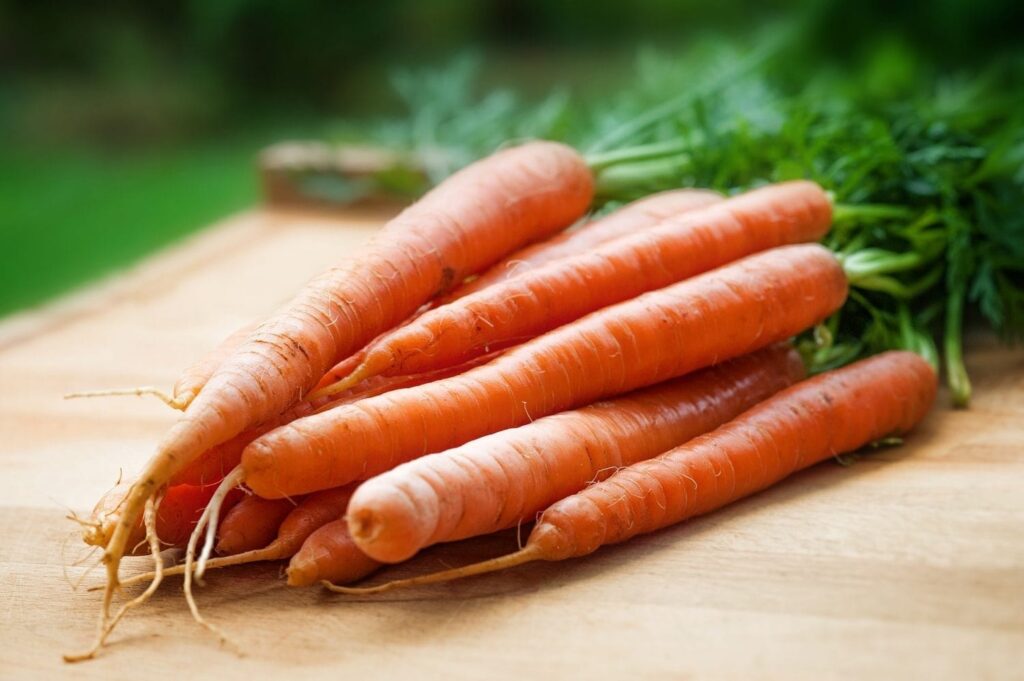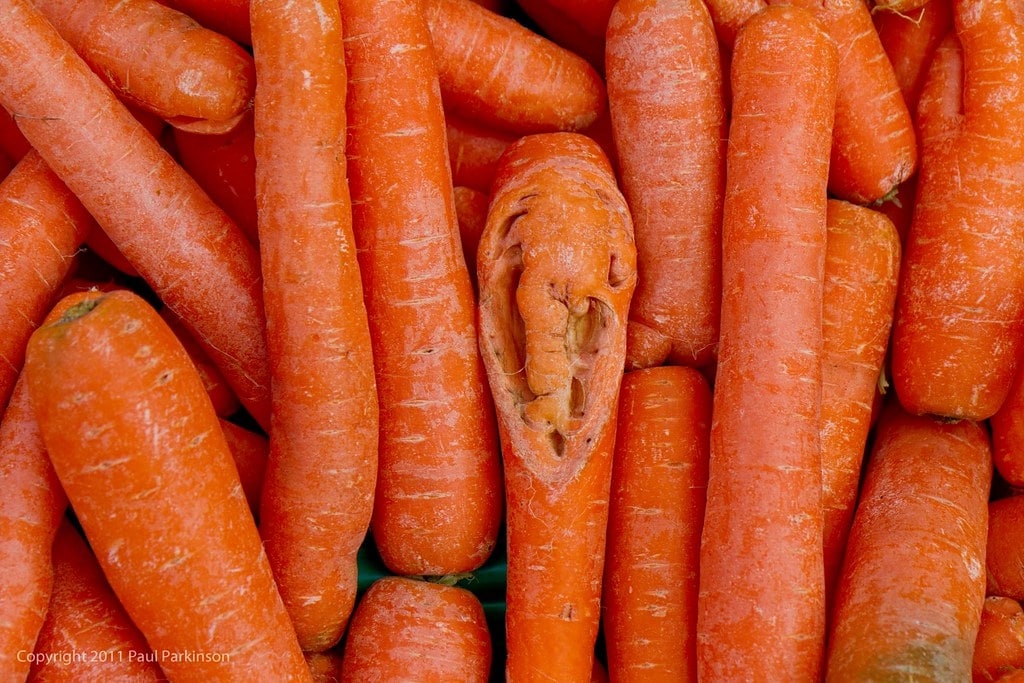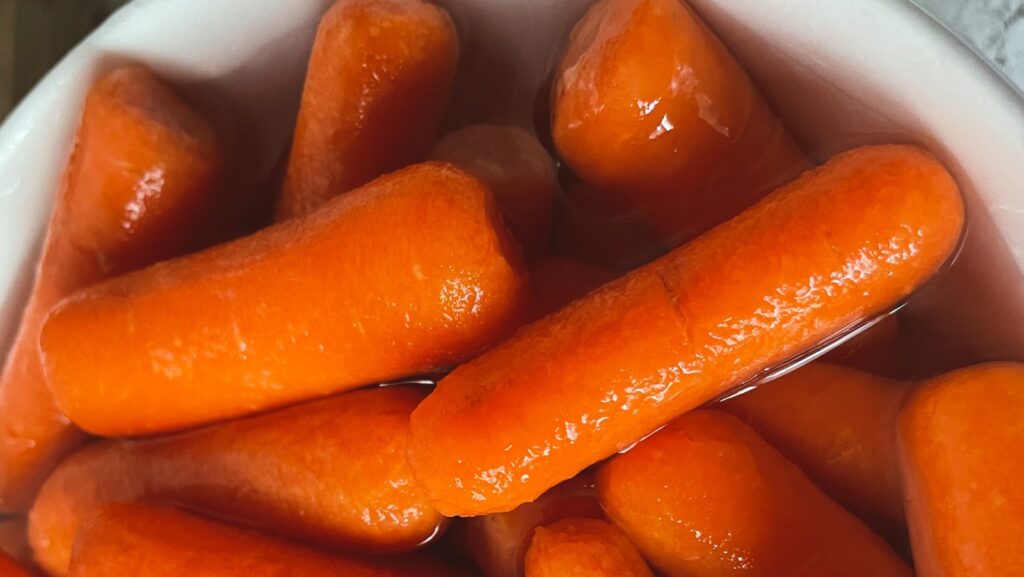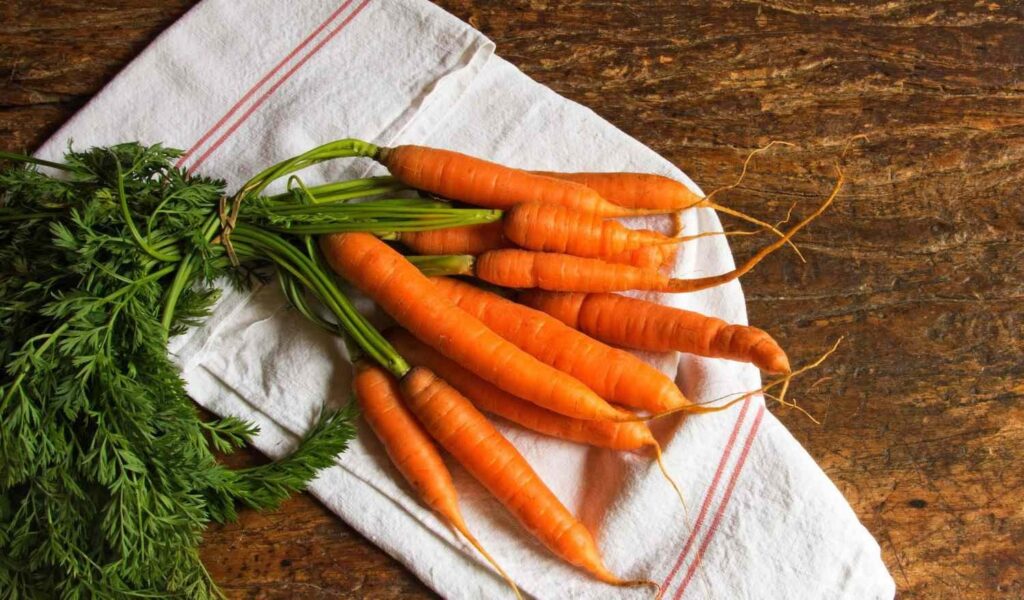Ever checked your carrots only to find them coated in a slimy sheen? It’s like a bad surprise party you didn’t RSVP for, am I right?
I know how you feel — the whole slime fest is a punch in the gut. Trust me, I’ve been there and done that more times than I’d like to admit!
As for those slimy carrots you were hoping to salvage — we don’t recommend putting them on the menu right away. Now don’t toss them out with the trash just yet — there’s still a glimmer of hope for your slimy veggies.
But, before you go making any rash decisions, let’s get the lowdown on what’s what. Ready? Let’s dive in!
Are slimy carrots safe to eat?

Slimy carrots are not safe to eat. The slime on carrots indicates bacterial contamination, particularly by lactic acid bacteria strains such as Leuconostoc gelidum and Leuconostoc gasicomitatum.
These bacteria can cause vegetable spoilage and may lead to foodborne illness if consumed. In general, it’s advisable to discard slimy carrots to avoid potential health risks — but if you still want to check if they can still be used, we’ve got instructions!
Why Carrots Turn Slimy

Carrots turn slimy primarily due to bacterial contamination. These bacteria thrive in environments with inadequate ventilation and moisture, which are commonly found in improperly stored carrots.
Improper Ventilation
Let’s say you’ve got some carrots hanging out in a space with about as much air as a vacuum-sealed bag. Well, guess what? Bacteria aren’t too happy about it either.
They need oxygen to breathe, just like the rest of us. So, when they’re stuck in this oxygen-deprived situation, they’re like, “Fine, we’ll do it the hard way!” and switch to anaerobic respiration.
Translation: they start pumping out acid like it’s their job, which ends up forming that icky slimy layer on your carrots!
Moisture
Carrots, innocent-looking as they may seem, are actually like a breeding ground for bacteria. They’ve got water, sugars, and carbs — all the good stuff bacteria just love.
And you know what makes it worse? Moisture.
Yep, blame it on condensation in fridges or sloppy washing and storage. It’s like rolling out the red carpet for those slimy little troublemakers to party on your carrots.
Bacterial Growth and Spread
So you’ve got bacterial bad boys like the aforementioned Leuconostoc gelidum and Leuconostoc gasicomitatum crashing the party in your carrots.
They’re not just there for the snacks — they’re there to produce slime, thanks to the sugars hanging out in your veggies.
In anaerobic conditions (that’s fancy talk for when there’s not enough air around), these bacteria go wild, spreading their slimy love and turning your carrots into mush faster than you can make a salad!
Signs of Spoilage

Knowing when your carrots have gone from crunchy to crummy is essential for keeping your meals safe and your taste buds happy. Here’s the lowdown on spotting those telltale signs of spoilage.
Sliminess
If your carrots are feeling slimy, it’s a big red flag for bacterial contamination and spoilage!
And if that slime layer is thick enough to make you question whether you accidentally picked up a pet snail instead of a carrot — well, let’s just say it’s time to bid those carrots farewell.
Odor
If your carrots start smelling funkier than a locker room after a championship game, it’s time to pay attention.
A strong stench, especially one that could knock you off your feet, is a big red flag for advanced spoilage and a bacterial party you definitely don’t want to attend.
Texture Changes
When you’re checking out those carrots, give them a good feel. You want them firm and crispy.
Any signs of softness, mushiness, or sponginess? Yeah, that’s a big no-no.
Color Changes
Check out those carrots and give them the side-eye for any weirdness like dark spots, browning, or funky discoloration. Sure, a little variation is normal, but if they start looking like they’ve had food poisoning on a bad date, you might have a problem.
Mold or Growth
Now, when you’re eyeing those carrots, channel your inner detective and give them a good once-over. Look out for any sketchy signs like mold, fungus, or anything that screams “zombie apocalypse!”
If you spot any moldy patches, fuzzy growth, or weird spots in colors like white, green, or black, it’s a red flag. Those babies are way past their prime, so do yourself a favor and steer clear.
How to Save Slimy Carrots

So your carrots are looking more like they’ve been sliming through a horror movie than sitting pretty in your veggie drawer. But hold up, they’re not quite at the “rotten stench” stage yet.
Believe it or not, there might still be hope for those slimy carrots. Depending on just how slimy they are and how much bacteria decided to crash the party, you might be able to salvage them.
Initial Assessment
Before you even think about scrubbing those slimy carrots, take a good, hard look at them.
If the slime layer is thin, there is no foul odor, and the carrots still have a firm texture, then maybe — just maybe — washing might do the trick in getting rid of any nasties lingering on the surface.
Hot Water Wash
Alright, first things first: give those slimy carrots a hot shower to help them shake off that slime. Then, get your hands (or better yet, a veggie brush) dirty and give those carrots a good scrubbing.
Show that slime who’s boss!
Peeling
If your carrots are sporting a slime layer thicker than a superhero’s cape or emitting a smell that could rival a landfill, it might be time for some serious action. Consider giving those babies a good ol’ peel.
Peeling isn’t just about shedding that outer layer of the carrot. It’s giving slimy carrots a deep makeover, wiping away all the surface nasties, including bacteria and slime — leaving you with clean, pristine veggies ready to be the star of the show!
Thorough Washing
So, you’ve just finished peeling those carrots, right? Well, don’t stop there, champ!
Give them another good rinse under some running water to make sure they’re squeaky clean and slime-free. Nobody wants slimy carrots, trust me.
Once they’re looking clean and clear, give them a pat-down with a clean cloth or a paper towel.
Immediate Use
If you’ve got some freshly washed and peeled carrots, don’t just let them sit there! Use them pronto to dodge any nasty bacteria and keep your food game strong.
Throw them into your recipes or munch on them as a snack to savor that crispiness. Now sure, giving your carrots a good wash can help fend off some of that gooey stuff, but let’s be real here.
If your carrots are still feeling squishy, smelling funky, or showing any other signs of going off, don’t play around with them. Toss those bad boys out to steer clear of any potential health hazards.
| Planter’s Tips Not sure how to use your newly-saved carrots? Here are some ideas: • Carrot Soup: Blend carrots, onions, garlic, broth, and spices. • Roasted Carrot Fries: Slice, toss, roast until crispy. • Carrot Cake: Bake with grated carrots, cream cheese frosting. • Carrot Hummus: Blend chickpeas, tahini, lemon, garlic, carrots. • Carrot Salad: Shred carrots, toss with veggies, nuts, dressing. • Carrot Muffins: Bake with grated carrots, cinnamon. • Carrot Slaw: Slice carrots, toss with cabbage, apple, raisins. • Carrot Smoothie: Blend carrots with fruits, greens, yogurt. • Pickled Carrots: Preserve in tangy brine. • Carrot Pancakes: Grate into batter, serve with syrup or yogurt. |
5 Ways to Prevent Carrots From Being Slimy

Keeping your carrots from turning into a slimy mess is all about mastering the art of storage and handling. We’re talking about outsmarting bacteria and keeping that crispiness intact — and here’s how.
Intensive Rinsing
Before you stash those carrots away, give them a good scrub with some water to rid them of any dirt or gunk. Just make sure you dry them off really well afterward.
Nobody wants slimy carrots ruining their veggie game, right?
Ventilated Storage
If you’re tired of your carrots turning into slimy messes before you even get a chance to enjoy them, here’s the scoop: store those bad boys in well-ventilated containers or perforated bags. It’s because airflow is your carrot’s best friend!
Think about it like this: carrots need to breathe just like you do. So, give them some space to do their thing.
Proper ventilation stops moisture from building up and puts a stop to any funky bacteria that might try to crash the carrot party.
So, if you’re all about crunchy, not slimy, carrots, remember this golden rule: let them breathe! Your taste buds will thank you.
Optimal Temperature
Store carrots at a consistent and cool temperature, ideally between 32°F and 40°F (0°C and 4°C), to slow down bacterial activity.
Refrigerators with humidity-controlled vegetable drawers are suitable for maintaining the freshness of carrots while minimizing moisture accumulation.
Avoid Overcrowding
Overcrowding your carrots during storage is a big no-no. It’s like stuffing too many people in an elevator — it’s going to get stuffy real quick!
So, here’s the deal: make sure your carrots are chilling in a single layer and none of that stacking nonsense. They need their space to breathe — just like you do after a big meal.
Just give them some room to spread out and you’ll avoid a moisture buildup disaster!
5 Myths and Facts about Slimy Carrots

Myth 1: Slimy carrots are safe to eat if washed thoroughly.
Fact: While washing slimy carrots may help remove some surface contaminants, it does not guarantee their safety. The presence of slime indicates bacterial contamination, which may have penetrated the carrot’s interior.
If the slime is accompanied by a foul odor or soft texture, it’s best to discard the carrots to avoid potential health risks.
Myth 2: Slimy carrots are caused by exposure to air.
Fact: Slimy carrots are primarily caused by bacterial growth, typically due to improper storage conditions or contamination during processing.
While exposure to air may contribute to moisture buildup and bacterial proliferation, it is not the sole cause of sliminess.
Myth 3: Peeling slimy carrots can make them safe to eat.
Fact: Peeling slimy carrots may remove some surface contaminants, but it does not eliminate bacterial contamination that may have penetrated the carrot’s interior.
If the carrots are severely slimy or exhibit other signs of spoilage, such as a foul odor or soft texture, peeling alone may not make them safe to consume.
Myth 4: Slimy carrots can be salvaged by cooking them.
Fact: Cooking slimy carrots may kill some bacteria, but it does not eliminate toxins produced by bacterial growth or ensure their safety. Plus, the sliminess of carrots may persist even after cooking, indicating bacterial contamination.
It’s best to err on the side of caution and discard slimy carrots to prevent foodborne illness.
Myth 5: Refrigeration prevents carrots from becoming slimy.
Fact: While refrigeration can help slow down bacterial growth and prolong the shelf life of carrots, improper storage conditions, such as high humidity or overcrowding, can still lead to sliminess.
Proper ventilation, dry storage, and regular inspection are essential for preventing slimy carrots, even when refrigerated.





